North Wilkesboro Speedway is a 0.625-mile (1.006 km) paved oval short track located in North Wilkesboro, North Carolina. Since its opening in 1947, it has hosted various racing events, primarily NASCAR-sanctioned races. The speedway has been under the ownership of Speedway Motorsports, LLC (SMI) since 2007, with Ronald Queen as the director of operations. The track is accessible via U.S. Route 421.
1945: Enoch Staley's Love for Racing
In 1945, Enoch Staley, after watching a stock car race in Spartanburg, South Carolina, fell in love with racing. This passion led to the eventual establishment of North Wilkesboro Speedway.
May 18, 1947: First Official Race
On May 18, 1947, the first official race at North Wilkesboro Speedway took place, with Fonty Flock winning a modified feature race. This event marked the beginning of the track's official racing history.
1947: Inaugural Season of Racing
In 1947, North Wilkesboro Speedway hosted its inaugural season of racing, marking the beginning of its long association with NASCAR events. This year laid the foundation for the track's future in motorsports.
1949: First Wilkes 400 Held
In 1949, the first Wilkes 400, a 200-lap race, was held at North Wilkesboro Speedway, establishing a long-standing tradition.
1951: First Running of First Union 400
In 1951, the first iteration of the First Union 400, known as the Gwyn Staley 400, was held at North Wilkesboro Speedway as a 150-lap race.
1953: Race Distance Decreased
By 1953, the race distance for the Wilkes 400 at North Wilkesboro Speedway was decreased to 160 laps, reflecting changes in the event's format.
1953: Mastin Brothers Sell Interest
In 1953, both Mastin brothers sold their interest in North Wilkesboro Speedway to Jack Combs. This transaction was a significant point in the track's ownership history.
1954: Race Distance Adjusted
By 1954, the race distance of the First Union 400 at North Wilkesboro Speedway was decreased to 160 laps, marking a significant change in the event.
April 1956: Completion of New Grandstand
In April 1956, North Wilkesboro Speedway completed a new concrete grandstand seating around 5,200, replacing the original wooden grandstands. This was part of gradual improvements made over the years to enhance the track's amenities.
June 1957: Announcement of Track Paving
In June 1957, Enoch announced that North Wilkesboro Speedway would be paved. The paving was completed by September of that year, marking a significant upgrade for the track.
1957: Track Paving Completed
In mid-September 1957, the paving of North Wilkesboro Speedway was completed. This development marked a significant upgrade from its original dirt surface, enhancing the track's racing quality.
1963: Race Distance Increased
In 1963, the distance of the Wilkes 400 was increased to 250 miles (400 km), or 400 laps, a format that remained until 1996.
1965: Feature in Esquire Article
In 1965, North Wilkesboro Speedway and local moonshine runner Junior Johnson were featured in an Esquire article by Tom Wolfe. This article played a key role in expanding NASCAR's recognition beyond the Southeastern United States.
1975: NASCAR's Shift to Larger Tracks
By 1975, NASCAR had started focusing on larger tracks like Daytona, which offered purses over a quarter-million dollars. In contrast, North Wilkesboro Speedway struggled to compete with much smaller purses and lower capacity, highlighting the growing disparity between large and small tracks in 1975.
1976: New Grandstand and Retaining Wall
In 1976, North Wilkesboro Speedway added a 3,500-seat grandstand named in honor of Junior Johnson and installed a 1/4 mile concrete retaining wall, replacing the old guardrail. This was part of ongoing efforts to improve the track's infrastructure.
September 1980: Track Surface Complaints
In September 1980, drivers complained about the quick deterioration of the track surface at North Wilkesboro Speedway. Bobby Allison, the winner of the 1980 Holly Farms 400, called the surface a disgrace, leading to its repaving by December of that year.
1981: Last Repave Before 2024
The last repave of North Wilkesboro Speedway before the 2024 renovation occurred in 1981, illustrating the long gap in major updates to the track's surface.
1990: Modernization Efforts in 1990
In 1990, North Wilkesboro Speedway added 3,100 seats and an electronic scoring pylon, replacing the last manual scoreboard on the Winston Cup Series schedule. These updates were part of ongoing efforts to modernize the track.
1992: West Grandstands Renovation
In 1992, the original West Grandstands at North Wilkesboro Speedway were expanded and renovated, with chairs replacing the barren concrete tiers. This was part of continued efforts to enhance the track's amenities.
January 1995: NASCAR's Boom Period
In January 1995, NASCAR vice president of competition Mike Helton declared that the Cup schedule couldn't grow much more. Despite this, there was a boom in developers planning to build high-capacity tracks in new markets, leading to predictions that NASCAR would abandon long-time staples like North Wilkesboro Speedway.
May 20, 1995: Death of Enoch Staley
Enoch Staley, a key figure in North Wilkesboro Speedway's history, passed away on May 20, 1995. His death marked the beginning of significant changes for the track, as motorsports businessman Bruton Smith soon approached the Combs family to negotiate the purchase of their half interest in the speedway.
1995: Death of Enoch Staley
In 1995, Enoch Staley, a key figure in the history of North Wilkesboro Speedway, passed away. His death came during a period of rising popularity for NASCAR in the 1990s.
January 2, 1996: Bahre's Purchase Announcement
On January 2, 1996, it was officially announced that Bob Bahre had purchased the remaining half-interest in North Wilkesboro Speedway from the Staley family for $8 million. This purchase was part of a larger shift in the track’s ownership and future.
April 11, 1996: Bahre's Reluctance to Sell
On April 11, 1996, Bob Bahre expressed his reluctance to sell his interest in North Wilkesboro Speedway to Bruton Smith. He stated that Bruton was bitter about his purchase and that he would not accept any offers from him.
September 29, 1996: Final Winston Cup Series Race
The final points-paying Winston Cup Series race at North Wilkesboro Speedway, the 1996 Tyson Holly Farms 400, took place on September 29, 1996. This race marked the end of an era for the speedway.
1996: Peak Capacity and Historical Preservation
In 1996, North Wilkesboro Speedway reached its peak capacity of 60,000. Despite the track's closure that year, many original buildings and structures were preserved as part of efforts to maintain its historical significance.
1996: Historical Structures Preservation
In 1996, North Wilkesboro Speedway's original structures, including suites and a tower featuring a Winston Cigarettes-sponsored mural, were preserved as part of its historical legacy.
1996: Peak Capacity Report
In 1996, a report from The Herald-Sun indicated that North Wilkesboro Speedway had a peak capacity of 55,000. This year highlighted the track's prominence in the racing world.
1996: Calls for Modernization in 1996
In 1996, despite North Wilkesboro Speedway's profitability, the track faced criticism for lacking in both capacity and amenities. Drivers and stakeholders called for NASCAR to move to more modern facilities, citing better pit road facilities and larger purses as crucial factors.
1996: End of Wilkes 400
The Wilkes 400 was last held in 1996, marking the end of a historic event at North Wilkesboro Speedway when the race was removed from the NASCAR Cup Series schedule.
1996: Final Points-Paying Races
Until 1996, North Wilkesboro Speedway hosted two points-paying NASCAR Cup Series race weekends, marking the end of an era for the track.
January 3, 1997: Official Closure of North Wilkesboro Speedway
On January 3, 1997, the Winston-Salem Journal reported that the North Wilkesboro Speedway facility was officially closed, and all employees were laid off. This followed a failed stockholders' meeting in December and marked the end of the speedway's operations.
1997: Track Left Desolated
In 1997, North Wilkesboro Speedway was left desolated due to a strained relationship between the new owners and the facility's reputation for lacking amenities. This caused significant local uproar.
August 1999: Deteriorating Relationship Between Track Owners
By August 1999, track co-owners Bruton Smith and Bob Bahre had not communicated for a year and a half, signaling a breakdown in their relationship and dimming hopes for the track's revival.
2003: Bruton Smith Rejects Purchase Offer
In early 2003, Bruton Smith dismissed a potential offer to purchase North Wilkesboro Speedway, citing the high costs of revival and describing the facility as 'fast returning to the earth.'
October 2004: NASCAR Test Session Held
In October 2004, North Wilkesboro Speedway hosted a private test session for NASCAR team Roush Racing, marking the first activities at the facility in over eight years.
May 2005: Proposal for NASCAR Hall of Fame
In May 2005, two North Wilkesboro city commissioners proposed the idea of placing the newly-announced NASCAR Hall of Fame at North Wilkesboro Speedway, despite the city not being a finalist.
2006: Commitments and Setbacks for Save the Speedway
In 2006, Save the Speedway announced a $1 million commitment from an investor, who later withdrew. Another offer led by Worth Mitchell also emerged, but by November, Bruton Smith reluctantly bought out Bahre's control of the track.
November 3, 2007: Bruton Smith Acquires Full Interest
On November 3, 2007, Bruton Smith acquired full interest in North Wilkesboro Speedway, solidifying his control over the facility.
2007: Ownership by Speedway Motorsports
In 2007, North Wilkesboro Speedway was acquired by Speedway Motorsports, LLC (SMI), with Ronald Queen serving as the director of operations. This year marked a significant change in the management of the historic track.
2007: SMI Acquires Full Control
In 2007, Speedway Motorsports (SMI) acquired full control of North Wilkesboro Speedway. This marked the end of two decades of failed attempts to revive the track by various groups.
July 2009: Charles Collins Arrested
In July 2009, Charles Collins, who had leased North Wilkesboro Speedway to produce a reality TV show and start a women-only racing series, was arrested and charged with five felonies.
November 2009: Speedway Associates Announces Racing Intentions
In early November 2009, Speedway Associates, led by Alton McBride Jr., announced plans to host USARacing Pro Cup Series races at North Wilkesboro Speedway in October 2010, securing a three-year lease from Bruton Smith.
January 2010: Legal Issues Surrounding Alton McBride Jr.
In January 2010, it was revealed that Alton McBride Jr. faced various legal issues, including bankruptcy and marriage problems. Despite this, local economic development pledged support for his racing plans.
October 2010: First Official Races Held in 14 Years
In October 2010, North Wilkesboro Speedway held its first official races in over 14 years, with Chase Elliott winning a PASS event.
April 2011: Second Closure of North Wilkesboro Speedway
On May 10, 2011, Alton McBride Jr. announced the second closure of North Wilkesboro Speedway due to funding issues. Save the Speedway cited McBride's alienation of volunteers and local leaders as contributing factors.
2015: Deterioration of North Wilkesboro Speedway
By 2015, North Wilkesboro Speedway had fallen into significant disrepair, with buildings caving in, grandstands collapsing, and extensive damage to several suites.
2015: Jeremy Markovich's Article on NWS
In 2015, Jeremy Markovich published an article on SB Nation addressing the financial and capacity issues faced by North Wilkesboro Speedway compared to larger tracks. The article highlighted the long-standing challenges in attracting larger purses and audiences.
2017: NWS Inspiration for Cars 3
In 2017, the abandoned North Wilkesboro Speedway served as the inspirational basis for the fictional Thomasville Speedway in the movie Cars 3.
September 2019: Dale Earnhardt Jr. Discusses Digital Preservation
In September 2019, NASCAR driver Dale Earnhardt Jr. spoke with Marcus Smith about digitally preserving North Wilkesboro Speedway. The facility was in such poor condition that it would require hundreds of millions of dollars to renovate, making physical preservation unrealistic.
May 2020: North Wilkesboro Track Scanned for iRacing
By May 2020, the effort to digitally preserve North Wilkesboro Speedway culminated in the track being scanned for the racing simulator iRacing, following a cleanup organized by Dale Earnhardt Jr. a few months earlier.
March 2021: Proposal for Dirt Races at North Wilkesboro
In March 2021, Barry Braun proposed running dirt races at North Wilkesboro Speedway. Marcus Smith expressed interest in revitalizing the facility, although no promises were made.
January 2022: Revitalization Plans Unveiled
In January 2022, Marcus Smith revealed plans for the renovation of North Wilkesboro Speedway, including conceptual drawings and the possibility of hosting a NASCAR Camping World Truck Series event.
April 16, 2022: Racing Resumption Announced
On April 16, 2022, Marcus Smith announced the resumption of racing at North Wilkesboro Speedway, scheduling multi-class grassroots events for August and October.
July 2022: Optimism for Racing's Return
By July 2022, Wilkes County Commissioner Eddie Settle optimistically predicted that racing would resume at North Wilkesboro Speedway, offering a significant economic boost to the area.
2022: Revival Effort Begins
In 2022, developers initiated a revival effort for North Wilkesboro Speedway, adding new amenities to modernize the facility while preserving its vintage aesthetic. This marked the start of a significant restoration project.
February 2023: Renovations Ahead of Schedule
By February 2023, leadership at SMI announced that the renovations of North Wilkesboro Speedway were ahead of schedule, signaling a strong future for the facility.
2023: Modern Capacity
As of 2023, North Wilkesboro Speedway has a reported capacity of 25,000. This reflects the current status of the facility as it continues to host racing events.
2023: Track Capacity and Vintage Aesthetic
In 2023, North Wilkesboro Speedway had a capacity of 25,000, down from its peak of 60,000 in 1996. The track retained a vintage aesthetic from the 1990s as part of an effort to preserve its historical value.
2023: Hosting NASCAR All-Star Race
Since 2023, North Wilkesboro Speedway has hosted the NASCAR All-Star Race, a significant exhibition event, alongside third-tier NASCAR Truck Series races.
March 2024: Repave Completed and Tire Tests Run
By March 2024, the repaving of North Wilkesboro Speedway was completed, marking the first since 1981. Tire tests were conducted in the same month.
2024: Ongoing Modernization and Preservation Effort
As of 2024, efforts are ongoing to modernize North Wilkesboro Speedway while retaining its vintage aesthetic. Original structures from before 1996 have been preserved, and new amenities are being added.
Mentioned in this timeline
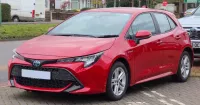
A car also known as an automobile is a wheeled...
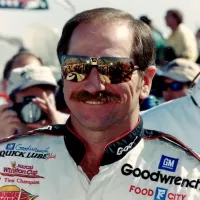
The Intimidator The Man in Black or Ironhead as he...
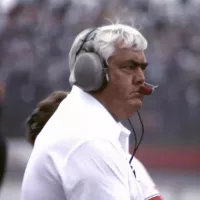
Robert Junior Johnson Jr was a renowned American figure in...

Dale Earnhardt Jr is a prominent figure in NASCAR known...
South Carolina a Southeastern U S state bordering North Carolina...
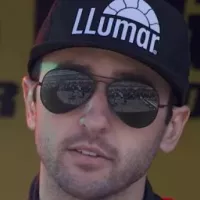
Chase Elliott is a prominent American professional stock car racing...
Trending
1 month ago Tesla Approved to Launch Autonomous Rideshare Service in Arizona: A New Era
Jaden McDaniels is an American professional basketball player currently playing for the Minnesota Timberwolves in the NBA He played college...
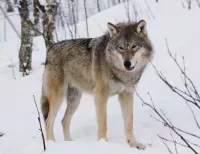
9 months ago Dire Wolf's potential return clashes with Trump's endangered species policy; de-extinction questioned.

28 days ago Trump Pardons Gobble and Waddle: A Thanksgiving Tradition Continues with Presidential Humor.

1 month ago Peyton Watson's Opportunity: Millions on Nuggets Roster and Denver Breakout Potential.
7 months ago HBO's 'Mountainhead' skewers tech elite in a satisfying end-of-world satire.
Popular

Ben Shapiro is a prominent American conservative political commentator media...

XXXTentacion born Jahseh Dwayne Ricardo Onfroy was a controversial yet...

Candace Owens is an American conservative political commentator and author...

William Franklin Graham III commonly known as Franklin Graham is...
The Kennedy Center Honors are annual awards recognizing individuals and...

Tucker Carlson is an American conservative political commentator known for...